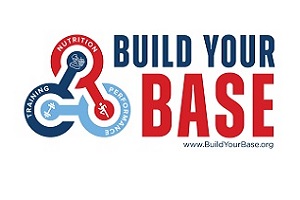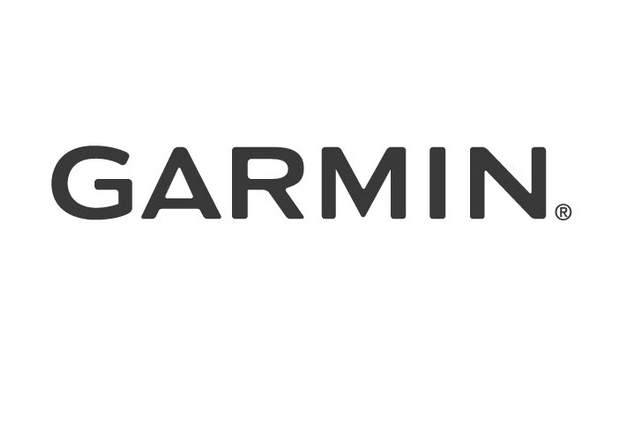THE EARLY YEARS
This will begin a series of articles discussing the early years of what is now the NIKE INDOOR NATIONALS. The series will focus upon the athletes, the great races, the intriguing matchups and the emergence of many athletes' best described as "great" in the truest sense of the word. I feel it is necessary to do this since much of the early history of this monumental competition will eventually be lost and that would be tragic. This meet changed the face of the sport within the United States. Never before had anything like this been attempted and not until the arrival of John Dye and dyestat would there be anything as significant to follow. Enough has been written about the founders of the meet and they will not be discussed herein. Suffice it to say no three individuals have ever done as much for the sport as the trio of Jim Spier, Tracy Sundlun and myself.
I have written earlier about the need for the first meet to do something spectacular, hence the recruitment of the five most outstanding returnees to the sport from 1983 headed by the 1983 female AOY LISA BERNHAGEN, Idaho, national record holder in the high jump, 6-02.75. The 1984 female AOY would also be present, LESLIE MAXIE, California, national record holder in the 400H, 55.20. The USL in the high jump, DOTHEL EDWARDS, Georgia, 7-06; ARNOLD CAMPBELL, Louisiana, USL in the shot put, 74-10.5 and totally dominant in the event with the top ten marks for the year; and CHARLES SMITH, Nevada, whose 26-05.5 lead the US in the long jump. All were recruited and all showed up. To introduce the nation to the idea of someone traveling across the country to compete in a track meet, we also paid the way for one adult to accompany them. Thus, we had some Mom's, Dad's, one coach and one "signer" as the Smith lad was hearing impaired.
But there was some pretty good local talent on hand as well. WENDY VEREEN, New Jersey was the nation's #2 returnee in the 100m, 11.17 and ranked the same in the 200m, 22.99 (behind Chandra Cheeseborough in both.) Just emerging as an Elite athlete, CLAIRE CONNER, New Jersey, #10 in the long jump, 20-03. CHERYL KLEIN, New York, her indoor 41-10.75 ranked her the #4 returnee. TANYA BYNES, New York came with 2:12.93 (#2) and 2:55.28 (#1) and was a heavy favorite in the middle distances.
An outstanding football player as well as a superb track athlete, DENNIS MITCHELL, New Jersey, whose 21.09 (#3) and 46.30 (#1) made him the top 200-400 man in the nation. Mitchell would later say his performance against top quality competition convinced him to stick with track over football. Shot putter JIM GILLIGAN, New Jersey, ranked as the #3 returnee, 61-10. Another top putter, GARY LE JAMBRE, Pennsylvania, 60-05.75 (#7) would compete.
Thus the stage was set for the first "true" national indoor track and field championships. If that was so, why wasn't it called the "National High School Championships?" rather than the PATHMARK NATIONAL SCHOLASTIC CLASSIC? The phrase "National High School…" has been copy righted and cannot be used by any other organization than the National Federation of High School Athletics. Understandably, meet organizers were leery of being seen as confrontational to the NFHSA. At a meeting it was decided to use the term "National Scholastic" as a compromise that, hopefully, wouldn't ruffle the feathers of that organization. It would also permit prep schools to compete.
The inaugural event was held in Princeton's famed Jadwin Hall. Princeton was quite costly but again the importance of making an outstanding impression was of paramount importance. Sundlun, the head of the Metropolitan Athletics Congress, had done an outstanding organizational job and his staff was more than competent. There was a plentitude of good officials within the area and they responded to the call. WE had athletes from 18 states including an outstanding group from Colorado under the tutelage of one of America's great coaches, TONY WELLS. If there has ever been a man deserving of being selected for the staff of a US Olympic team, its Wells. But that's another story. Now, all we had to do was put on the meet.
As I recall, it was an overcast day, rather chilly. There was some delay opening the doors due to some inevitable last minute glitches. When we'd gone over the entries, we'd noticed am extremely thin field in the Boy's 55mH and I went out and asked for volunteers to fill out that event. Those who stepped forward turned out to comprise a very good group.
At exactly 8:13 (I know from my notes) the first gun sounded. The meet was on!
Two national records were set, WENDY VEREEN and DENNIS MITCHELL in the 300m. Vereen's 38.79 was run in her heat but her awesome 37.80 was erased as a result of a lane violation. Mitchell won handily in 34.04 besting Clinton Davis' 34.10 set a year earlier. KRISTIN PERINI, Massachusetts, 9:56.61 took over the USL in the 3000m; CLAIRE CONNER's 19-07.5 did the same in the long jump and was the #3-AT; and CHERYL KLEIN put the shot 45-04, another USL and #4-AT. ROD CLARKE, New York moved to the USL spot over 800m with 1:54.26.
At that time, no one had ever heard of the meet and several outstanding performances went unrecognized by the sports leading statisticians. Clarke's 800m time as well as PAUL STEELE'S 48.90, good for the #3-US slot.
The meet also saw the emergence of some stars of the future. In the Girl's 800m a young frosh, SHOLA LYNCH, New York, burst upon the scene as she defeated pre-race favorite Tanya Bynes 2:10.59 — 2:15.10. Again, going to my memory bank, we were stunned at the performance. Back then, there were few 2:10's run indoors and to have one at our inaugural meet brought smiles to our faces. Bernhagen was expected win easily in the high jump but a junior from New Jersey, TATIANA SMOLIN gave her all she wanted clearing 5-10 but losing to the 6' clearance of the Idaho girl. Back then, the meet was on a tight budget and, to save money, my wife and I housed Lisa and her Mom at our home on Long Island.
There were others competing who'd not yet reached the heights of Elite status. A young frosh, CARYL SMITH came in with Wells' group and took 6th in the 55m, 7.29. Today Smith is one of the country's rising young collegiate coaches having just taken the reins at Central Florida after a solid career as an assistant at Tennessee. We'll hear more about Smith later.
ANDREA THOMAS, New York, would also go on to greatness. At Princeton in 1984 she finished 3rd, 56.12 in the 400 and went unplaced in the 800m. KATHY FRANEY, New York, captured 3rd in the 1500m, 4:43.45 to start an illustrious career that culminated in being an integral part of the great Villanova teams. Another Tony Wells creation, YOLANDA JOHNSON, also copped a bronze, hers in the 55mH, 8:19.
Dennis Mitchell went on to Olympic greatness as did Paul Steele and Andrea Thomas although these two latter competed for their native countries other than the US.
I vividly recall walking out onto the middle of the track after the meet and exulting in being a part of such a momentous event. Little did I realize then just how momentous this competition would be. I also reveled in my teams winning the Boy's 4x800mR. For me, it was a very good day…
1985: Back in this bygone era there was a popular TV show called "Can You Top This?" Well, that thought was in our minds as we prepared for the second PATHMARK CLASSIC. Our triumvirate had clearly defined tasks. Sundlun handled all the organizational and financial matters; Spier ferreted out every Elite athlete in the nation; and I recruited his handpicked cast of performers. One of the things that made the group so successful was each person carrying out his job and never interfering with the other two. One year, while recruiting the wondrous Muir HS with Obea Moore, I decided to offer more tickets to one team than ever. It was the first time I'd ever contacted Sundlun about a recruiting matter. Hesitantly, I explained what I wanted to do and asked for his approval. His response, 'That's your call. Do whatever you think.' End of conversation.
There had been no repercussions from the National Federation although many states still refused to permit their athletes to compete. Dire threats were made but a case involving ice hockey in New York pretty effectively ended any problems. That case found the school had no jurisdiction over a child when the child was not in school. That's an over-simplification but that opened up the gates for student-athletes to compete on their own over the weekends. However, in order for the students to exercise their rights, someone had to take the state to court and most parents didn't have the resources to do so.
But, the meet was an idea whose time had come. Gradually, more and more states came around to realizing what a boon the event was to the high school athlete. Each year over 50 college coaches would show up at the meet, sometimes more. Where else could they see so many of the finest talent this nation had to offer? Another memory, after a meet I saw a coach from a small college beaming. Puzzled, I asked why the good humor? "I just won my conference title for the next four years," he exulted. "I recruited five kids who can win in my league." None of the five had medaled but all were pretty good. Not UCLA, USC, Texas caliber by any means but perfectly suited to a small school. This partially explains why the meet has generated well over $50,000,000 worth of college scholarships in its twenty year run.
Back to '85. The sport was flourishing and the athletes were better than ever. The initial competition had been so good that it could not go unnoticed. The word spread. If you wanted to go up against the best, be seen by dozens of college coaches and have a chance to win the ring symbolic of being the nation's best, you HAD to compete at Pathmark. And they did. In 1985 there were 24 states represented. They came from Oregon and Florida; from Arkansas to Colorado. Wyoming was represented as were Wisconsin, Louisiana and Michigan. Recruiting was still tough especially since we pretty much stopped awarding Travel & Housing (TH) grants to parents and coaches. Whereas we'd recruited only five Elite athletes in '84, in '85 the figure was much higher. Sundlun was determined that no Elite athlete who wanted to compete should be denied the opportunity. Spier had to be much more selective and I had to prioritize carefully. Or so we thought. Sundlun refused to lower his standards and insisted we go full speed ahead with our recruiting.
Tony Wells came in again from Colorado and CARYL SMITH, who'd finished 6th in '84 became the champion in '85 and tied the national record in the process running 6.94. Another Colorado youngster, YOLANDA JOHNSON, took top honors in the 55mH with a meet record (MR) 7.92. But the sensation of the meet was a slight youngster from Boston, TASHA DOWNING. She won a terrific duel with another underclass person, ROBIN DE SEIGNORA with both setting records. Downing sped to national frosh marks, 39.30 (#4-AT) for 300m and 35.39 (#7-AT) at 300y. DeSeignora's 39.34 (#5-AT) established a new junior class record while her 35.46 (#6-AT.) Downing's early speed gave her a lead that held up despite a great closing effort by DeSeignora.
The Boy's fields were loaded with kids who would go on to greatness. RANDY BARNES, West Virginia, won the shot with a throw of 62-01. He went on to Olympic fame but also his victory caused a problem. His high school principal advised due to state rules, Barnes could not accept the championship ring since its value exceeded the financial limit imposed by the state. We sent the ring to the principal and it was presented to Randy at his graduation. ERIC METCALFE, Virginia, won the long jump, 25-0-5.25 (#3-AT) but made his fame on the gridiron as a stellar defensive back and kick returner. FLOYD HEARD, Wisconsin won the 55m, 6.39 and went on to be a member of the great Santa Monica TC relay squads. BRANDON RICHARDS, California vaulted 17-06 establishing another national high school record. RICK NOJI, California won the high jump, 7-04 jumping 20" over his height! He beat a kid from Louisiana, HOLLIS CONWAY, who went on to set an American record in the event later in his career. But Conway was a winner as he took top honors in the triple jump, 48-03. Also competing, almost unnoticed, was a freshman from Philadelphia, one WILLIAM REED. He took third in the 300m in 34.58, setting a new freshman mark in the process. Another athlete who would become a star of the first magnitude was BRAD HUDSON, Oregon. He also won bronze, posting a 3000m time of 8:43.76. The winner of that event, CALVIN GAZIANO, California caused problems. When I called him with the invitation to compete he stated, "Well, it's a new meet and I know you need some big names so I'll come." He was not the shy, retiring type. After the meet he HAD to be on the flight home so he wouldn't miss a day of school. At that time California and Louisiana had rules stating if you missed a day of school, due to an athletic competition you would be ineligible for the remainder of the year. Making a long story short, Calvin missed the plane. "I had to shower," was his response when asked why he hadn't hurried as requested. We got him on another flight but at one time during the frantic search for such a flight, the three of us, Sundlun, Spier and I each had at least one phone pressed against our ear(s) trying to solve the problem. Conway also missed his flight but got around the attendance problem with the help of a friendly custodian who let him sneak into the school via a basement window and an understanding homeroom teacher who reported him present when he was not. There are still some GOOD people, blessed with common sense, in this world.
The meet was packed with great performances and competitions. For example, the Girl's Triple Jump saw the #'s 4 — 5- 6 — 11 efforts of All-Time while a mere .06 separated the top six in the Boy's 55m. Another note of some significance, in several events, all of the top six finishers represented different states. In only our second meet, the event was rapidly developing into a true national-class event.
86: Much like those who have searched for the Holy Grail, the meet management of this event has constantly searched for a "fast" track. With that in mind, the meet moved from one Ivy League venue to another. Yale University had a sensationally fast track, probably, at that time, the fastest in the country. BUT, and it was a big 'but', it only had four lanes. That created some problems but we opined the fast surface more than made up for any problems. Our thinking proved to be correct as the performances went from merely 'terrific' to 'absolutely awesome.' The turnout was the same, 35 states sent athletes and I set a new goal for myself; get a kid from all 50 states. More on that later.
In my last Musing's I stated the two greatest races I've ever seen were William Reed vs Steve Lewis in the 440 and Melody Fairchild's 9:55.52 for two miles. When asked his choice, Tracy Sundlun immediately responded, "Maicel Malone and Tasha Downing in the 300m." A year earlier, as a frosh, Downing had won the 300m by .04 over Robin DeSiegnora. Now she was back to defend her title. Still a youngster, only a soph, she had to contend with a newcomer, one MAICEL MALONE, Indiana. Malone hadn't shown much the prior year during the indoor season but outdoors she'd shown flashed of brilliance. 11.69 (#2-returnee) — 23.80w — 53.7 and she'd established herself as a 'contenduh.' Still, no one gave her much of a chance against the young Bostonian.
Then came the heats. Malone running in the first section gave notice she'd arrived. Her 38.08 was a National record, a junior class record, a meet record and a Coxe Cage record! (Coxe Cage is the name for the Yale facility.) Downing took the second race at 38.82, a national soph mark. De Seignora had lost some of her luster although she won her heat but in a rather pedestrian 40.18. She'd finish 7th on Sunday. In the final Downing had the edge having drawn L3 with Malone on her outside in L4. Malone's early speed was the difference. She hit the 300y mark (34.31) with Downing .03 back. Downing made her move but to no avail. She cut .01 off the 300y margin but the Indiana lass prevailed 37.86 — 37.88. "I knew I was an Elite runner after that race," Malone stated in a recent interview. Outdoors she was simply outstanding. Look at these marks (US rank in parentheses), 11.49 (2), 23.12 (USL) and 52.42 (2.) (I have yet to get Mr. Spier's choice but it's coming.)
For the Girls, the Mile was truly outstanding. From Wisconsin, SUZY FAVOR had turned in some scintillating efforts. 4:19.43 over 1500m, by far the nation's best and 4:48.6, #5-US. One problem, Ms. Favor had never been out of her home state! With all due modesty, this was one of my finest recruiting efforts. I convinced her and her Mom to come to Yale. It took every bit of my oral ability to get the job done and then…it almost fell apart in Chicago. When the Favors' reached the ticket window the agent had no record of them. Not overly enthused about the trip in the first place, they were ready to go back home. By a freak of luck, Steve Bartold, the Yale track coach, returning from the NCAA Championships vouched for them and they continued on to New Haven. The field was loaded! Favor was merely magnificent. Taking the lead from the start, she took the gold in 4:45.18 with highly regarded SHOLA LYNCH back in 4:48.94.
But, as superb as was the Girl's mile, the Boy's was even better, perhaps the greatest high school mile of all time and certainly the best up until 1986. The field was lead by JOHN TRAUTMAN (4:10.90), New York. He'd ranked in EVERY event from the 800m through the 5000m a year prior and was the class of the field. BUT, so had Texan REUBEN REINA, (4:12.2). The brothers MASTALIR, ERIC (4:14.6) and MARK (4:14.0) were ranked from the 1500m through the two mile. MARK DANI, California, his (8:49.1) put him squarely in the mix. LUIS SANCHEZ (4:12.2), another Texan had to be ranked as one of the favorites. Jim Olsen, (4:15.28) California, New York's Zach Shea (4:15.01) and Canadian Kevin Robinson rounded out the field.
When the gun sounded Shea went immediately to the front in a vain attempt to slow the pace. The field rushed past him and the hunt was on. The field was bunched throughout the first 880 (we've always run a full mile at NSSF-administered events) but then the strength of Trautman (9:08.16); Reina (8:59.19); E. Mastalir (9:06.49) and Dani began to control the race. Trautman appeared to have the win until the final turn when Reina began a tremendous rush. Just as it appeared he would catch Trautman, Dani surged past Mark Mastalir causing Reina to pull up and go around. "I'll always believe that cost me the race," stated Reina in a conversation awhile ago. Trautman, 4:07.61(#4-AT); Reina, 4:07.69 (#5-AT); Eric Mastalir, 4:08.06 (#7-AT); Dani, 4:10.31 (#10-AT); Mark Mastalir, 4:11.41; Robinson, 4:18.51; Sanchez, 4:19.72; Olsen, 4:20.04 and Shea, 4:27.72 made this one of the finest mile races of all-time.
Let's go back to 'How Can You Top This?' There were two other national high school records set that must be mentioned. WILLIAM REED, Pennsylvania, made mince meat of a solid 300m field as he clocked 33.19 while CURT CLAUSEN, a teammate of Favor's in Wisconsin, came through in the mile race walk at 6:18.32. An aside, Reed's 22.35 en route ranked #10-AT for that distance!
Perhaps the event that best personifies the far reaching effect of the meet upon the national scene was the Girl's Triple Jump. Virginia's DANA BOONE, long jump winner at 19-11 (#5-AT) and a pre-meet favorite in the TJ ( took a mere sixth here, 38-02.75, no big deal until you realize that her jump was the #7-AT! Starting with the winner, KIM AUSTIN, North Carolina — 39-08 (#2-AT); and continuing through seventh place, EVERY scorer's performance ranked them #'s 2 — 8 on the All-Time list! The record book had been completely rewritten at one meet!
Now, I hope you're beginning to see why I've come up with all the times, the ranking, the records. This meet, for which which so many had predicted doom and disaster, was literally changing the face of the sport. NO OTHER SINGLE HIGH SCHOOL ATHLETIC EVENT EVER HAD THE FAR REACHING EFFECT AS DID THIS COMPETITION. In event after event new national records were being set, sometimes by more than one athlete in the same event. Class and age group marks fell as steadily as the rain I see looking out my window while writing this. And it would only get better.
The nation's finest athletes and their coaches were accepting the dictum which I shall credit to the great Larry Byrne, "If you want to rank with them, you've got to race with them."
One cloud on our horizon, Jack Shepard still refused to recognize the meet as being worthy enough to list the results in his High School Annual. Bummer.




